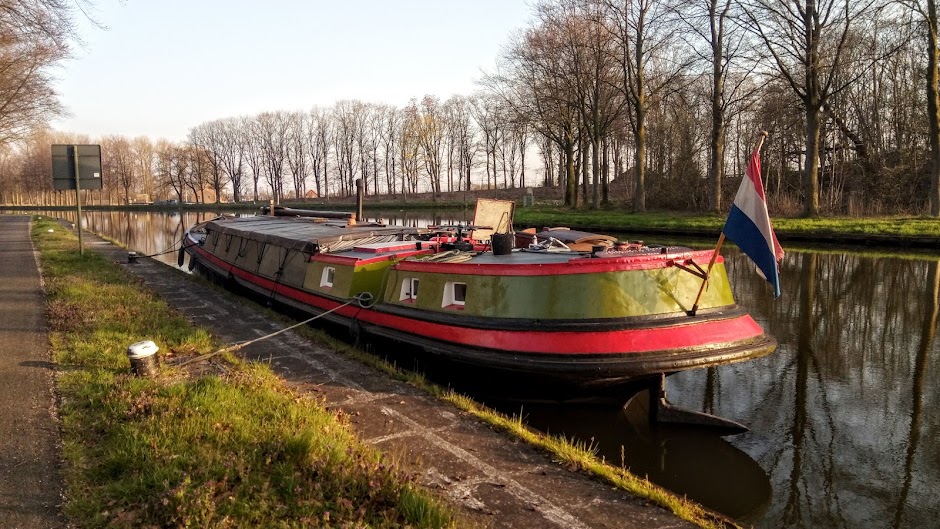
Belgium is full of surprises. I suppose that in itself is not surprising when you think it is the home of surrealism; the birthplace of Tin Tin and the magnificent Jacques Brel; and the country where competitive cycling is the national sport, and not, as you might expect, football, rugby or even tennis.
Given as we are to forays into our neighbouring country in search of small adventures and unexpected delights, we were thrilled to bits a couple of weeks ago to find a treasure trove of surprises when stopping for a simple cup of coffee in the village of Lillo, not far from Antwerp.
Lillo itself is a surprise. It nestles amidst the towering cranes and container terminals of Antwerp's massive harbour. Virtually untouched by time, it retains its original earthwork fortifications surrounded by a moat and fronts the great estuary of the Schelde. It has its own tiny harbour, which empties at low tide so that the moored boats rest gently on the mud flats. It has also maintained its quaint village centre, which has become home to a number of artists and alternative-minded residents. To go there is to feel a sense of peace, a 'still point of the turning world' like TS Elliot's Burnt Norton.
Lillo was spared when the port of Antwerp was built, unlike many other villages that were swallowed up by the hunger for more and greater shipping terminals. Because of this, it has a timeless quality, and indeed time seems to have stood still there. No surprise then that Koos and I enjoy stopping there from time to time on the way to Zeeuws Vlaanderen.
On this occasion, though, our usual hostelry was closed, so we crossed the empty square towards Het Landhuis, the only café that appeared to be open on such a chill and blustery November day. We went in hesitantly, as there appeared to be a private function in progress, but the proprietor, who was having a smoke outside, ushered us in with a welcoming smile.
After ordering coffee, I disappeared off to euphemistically 'powder my nose', and when I got back to the small bar where we were sitting, Koos was already talking animatedly to a distinguished looking gentleman, who introduced himself as Leo. They were discussing the history of the area, and it transpired that right next door, there was an extensive museum of artefacts rescued from all the villages that had fallen under the axe of industrial development. It was not open now, Leo said, but it contained a marvellous collection, displaying the old ways of the former locals. Hearing our new friend talking so enthusiastically about the museum, the owner of the café asked if we would like to see it. He had the key and Leo was welcome to show us around.
Of course we jumped at the opportunity, so armed with the means, Leo led the way, not outside as we'd expected, but down through the basement of the Het Landhuis and unlocking an ordinary looking door, he led us into Aladdin's cave.
From the outside, the museum looks like a couple of plain and ordinary residential houses, but inside, it consists of more than thirty rooms, suggesting that several houses have been converted for the purpose. Every room is designated to a specific aspect of life and each has a full-size model of a villager, dressed in traditional clothing. There are all the standard household rooms fitted out with the furnishings and paraphernalia of yesteryear, as well as an old-fashioned iron stove and cooking implements in the kitchen. There is also a schoolroom, complete with tiny desks, blackboard and globe, a bar with old-style beer taps and optics, a room with a pair of wonderful sledges driven by huge penny-farthing style cycles, and another room devoted to preserved documents and texts, hundreds of years old.
We passed from room to room in some awe, astonished that so much had been rescued and kept so lovingly in so small a village. Leo was clearly delighted to show us, and Koos took a photo of him 'acting' as a smiling barman behind the beautiful wooden counter of the café. Eventually we made our way back into the twenty first century, and took our grateful leave.
What a special experience it had been.We were glowing with it as we stepped out into the biting wind. It was not just the pleasure of seeing the museum that had warmed us through, nor was it the good hot coffee; it was the kind hospitality of Leo and the café owners who had so spontaneously welcomed us in and and given us their time, not to mention a free tour of these gems from the past.
Lillo has drawn us to it before, and there is no doubt it will do so again. But next time, we will take some family or friends with us, because treasure like this needs to be shared.















